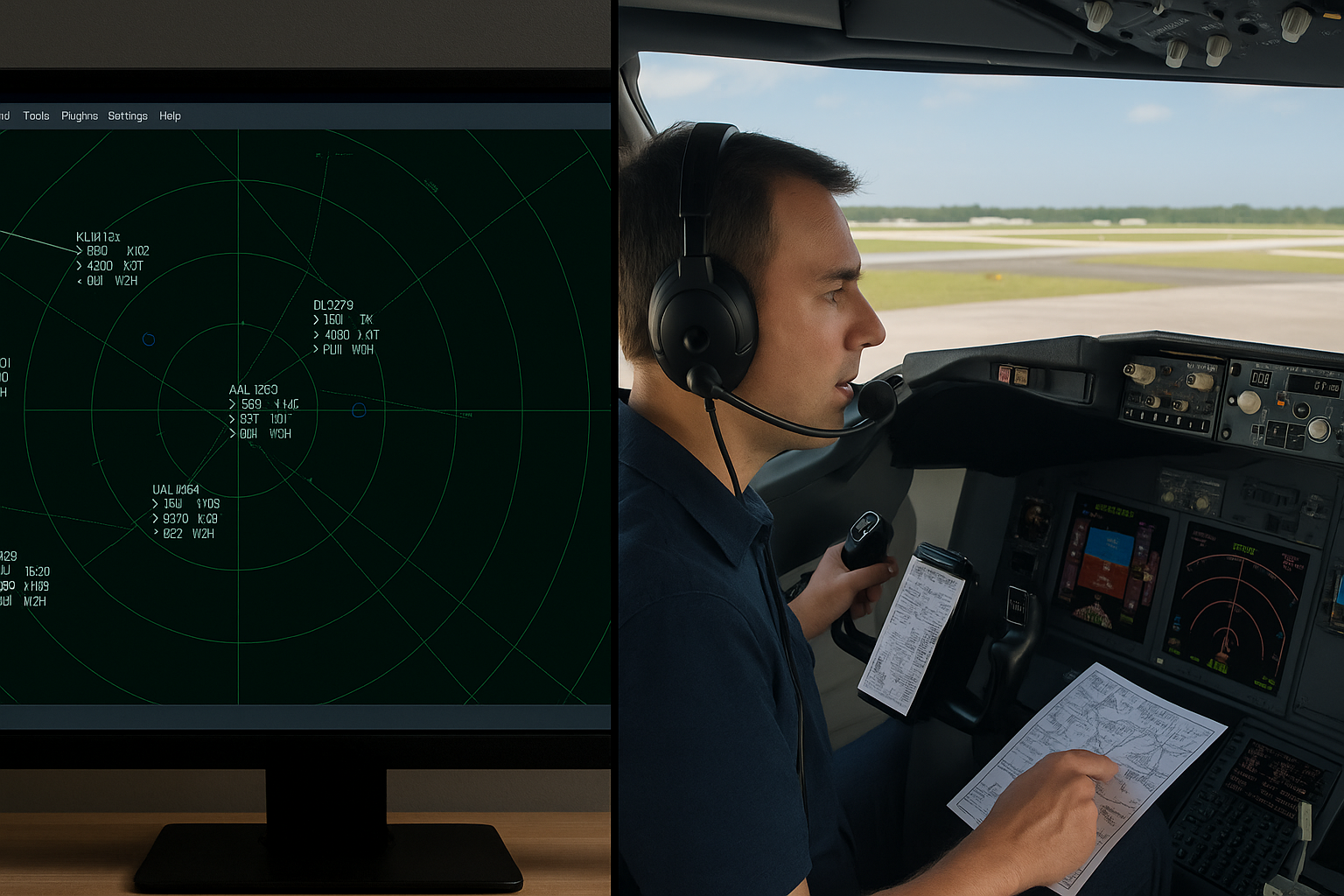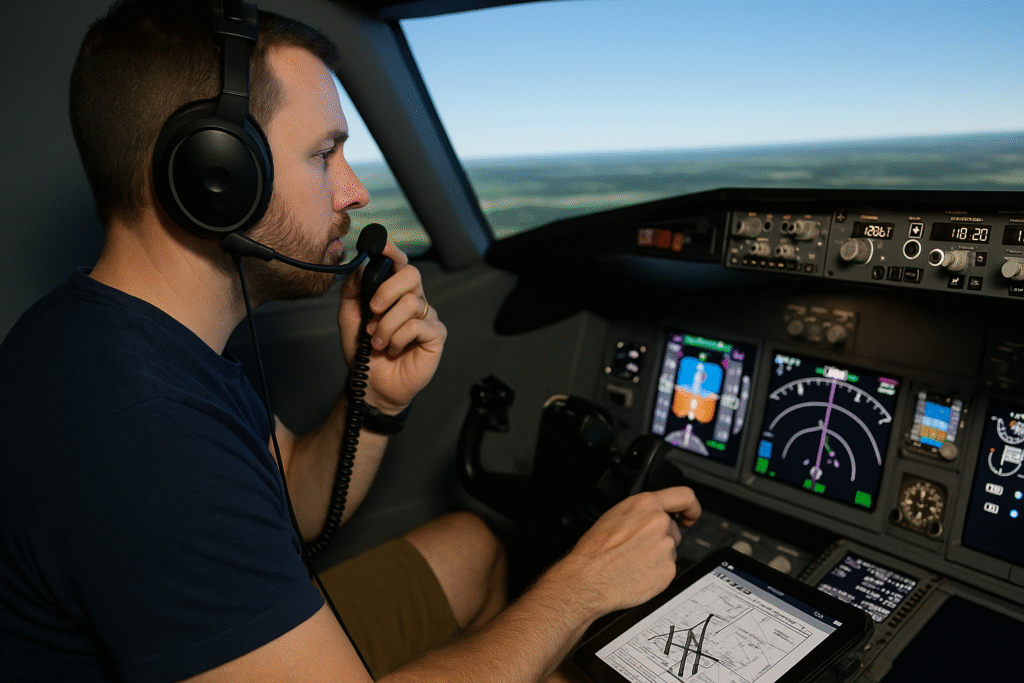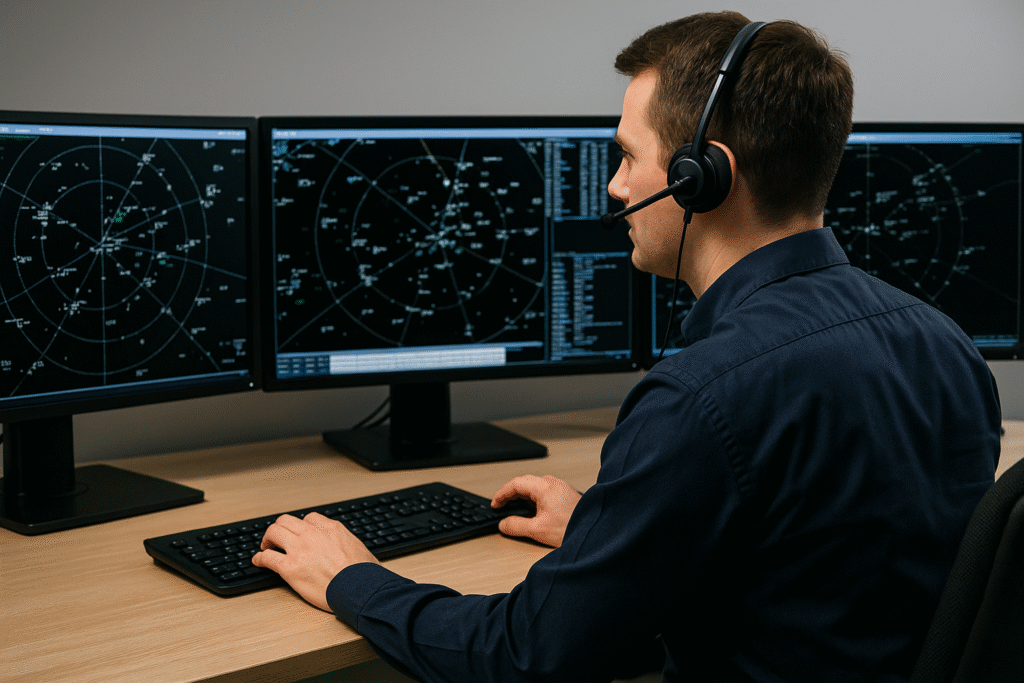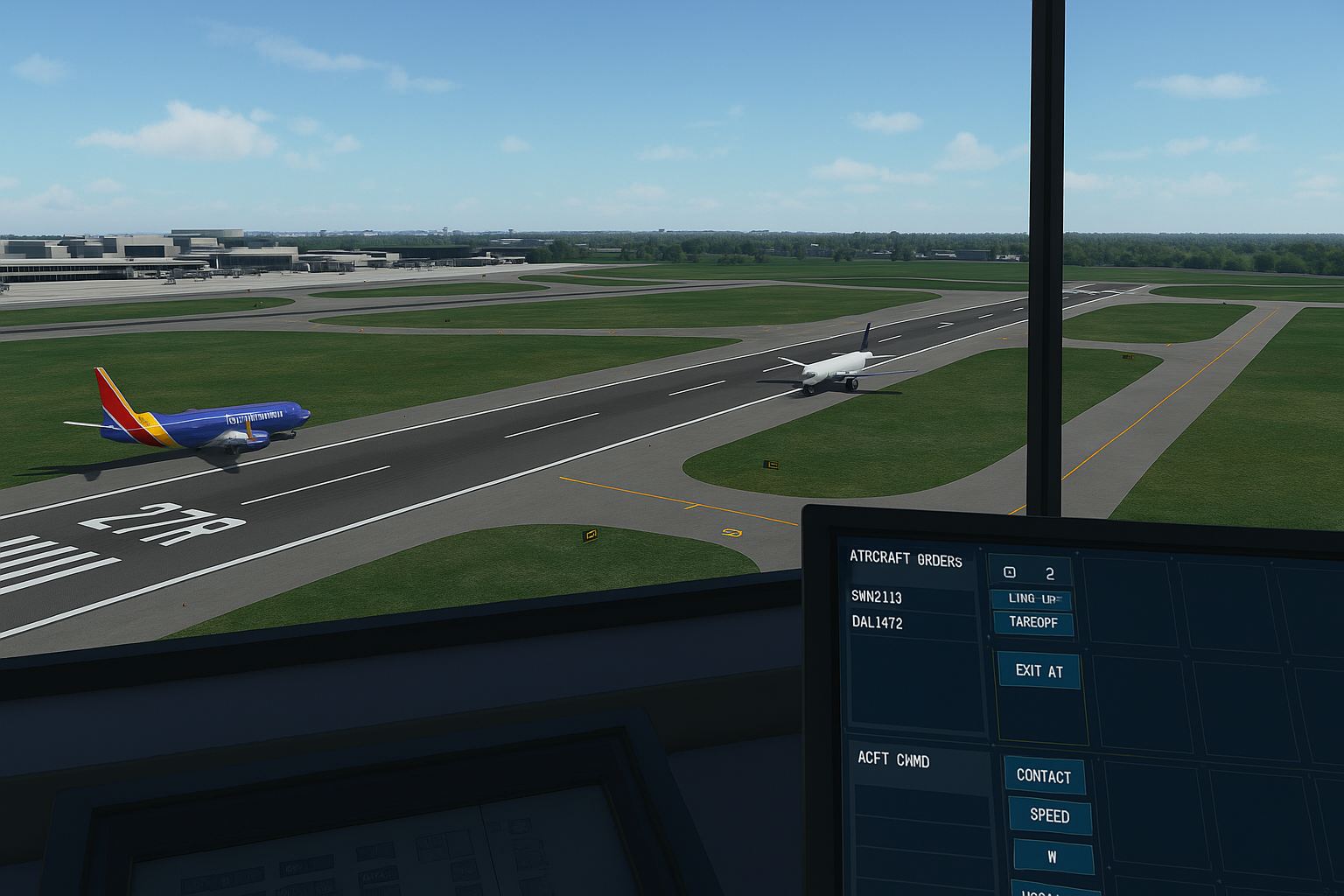Last updated on June 17th, 2025 at 10:21 am

ATC simulation software has really taken the flight sim world to the next level. Whether you’re a simmer looking to sharpen your pilot skills, curious about what it’s like to manage busy airspace, or just want to add more realism to your flights, there are some fantastic tools out there. In this guide, I’ll walk you through some of the top options—whether you want to fly, control, or try both.
Pilot-Facing vs Controller-Facing ATC: What’s the Difference?
Most ATC simulation software fits into one of two main categories. First, there’s pilotfacing ATC, which runs inside your flight simulator and lets you talk to live human controllers or smart AI, just like you’d experience in the real world. Networks like VATSIM and PilotEdge fall into this group. These make your flying experience a lot more realistic and are super useful for folks practicing instrument flight rules (IFR) or just looking for a deeper, more social flying vibe. If you’re still getting comfortable with IFR basics, check out Understanding the Basics of Aerodynamics in Simulators for a solid foundation.
Controllerfacing sims, in contrast, flip the script. Here, you’re the one running the show—you direct traffic, sequence landings, and manage departures. If you’ve ever seen a documentary about ATC and thought, “That looks intense. I want to try it!” then software like VRC, EuroScope, or standalone tower sims are perfect. It’s a hands-on way to get a real taste for the decisionmaking and multitasking ATC professionals face each day.
Top Picks for Pilotfacing ATC Simulators

If you’re aiming for maximum realism and community, the most popular ATC software for pilots revolves around live multiplayer networks, where real people serve as controllers and pilots. Here are some of the best options to track down:
- VATSIM: One of the largest and oldest multiplayer ATC networks, totally free and volunteerdriven. You can log in, file a flight plan, and interact over real radio frequencies with human controllers—some covering massive regions or even continents. Flights can be short regional hops or longhaul transatlantic adventures. VATSIM also welcomes anyone wanting to train as an ATC, so don’t think it’s just for pilots. New to online flying? You might find Navigating the Virtual Skies: Tips For Beginners helpful before hopping on the network.
- PilotEdge: This is a paid network that focuses on American airspace with a structured, professional vibe. Controllers are trained and often have real aviation backgrounds, making it a favorite of realworld pilots and folks prepping for checkrides or ATP training. Everything operates according to strict phraseology and regulations, and there are even real checkrides and virtual procedural tests available.
- IVAO (International Virtual Aviation Organization): Free and global, with a friendly, organized structure. IVAO is divided into distinct regions and features custom clients—IVAP for pilots and IVAC for controllers. A welcoming community makes it approachable for beginners, and you can pick up some international phraseology and procedures, which is awesome if you want to branch out.
- POSCON (Positive Control Network): A newer ATC network that’s been quietly building momentum. It’s still growing, but it’s packed with modern features—like crisp voice comms and an up-to-date interface. If you’re into trying the latest tools and don’t mind being part of an evolving platform, POSCON might be worth a look.
Controller-facing ATC Sims: Run the Show Yourself

If you want to control radar screens, direct pilots, and keep everything from spiraling into chaos, there’s a solid mix of software geared toward controller-side ATC simming. These work in tandem with multiplayer pilot networks, but some also function in standalone “offline” modes or with AI traffic.
- VRC (Virtual Radar Client): This one’s been around for a while and is still a favorite for many VATSIM controllers, especially across the U.S. It’s a bit dated and only runs on Windows, but it gets the job done—and it’s a good starting point if you’re new to radar-based ATC.
- EuroScope: Preferred by Euro-based controllers but works globally. It’s highly customizable with sector files, plugin support for extra tools, and realistic radar displays. EuroScope is used by both VATSIM and IVAO controllers across Europe, and supports advanced features like CPDLC and custom automation to give a boost to your control experience.
- ATCpro: Not linked to any online network, but a standalone desktop sim focused on U.S.-style TRACON (terminal radar) operations. ATCpro is terrific for those who want to step up their approach or departure-level skills. The voice recognition system lets you talk naturally with AI pilots who respond in believable ways. All basics are covered, from vectoring for approaches to sequencing and traffic flow management. For a broader look at enhancing your sim setup, check out Essential Hardware Upgrades For Enhanced Sim Experiences.
Fun and Visual ATC Simulation Games

If you’re interested in a more accessible—or just more eyecatching—ATC experience, several options mix classic simulation with gaming-style environments. These can be great for those who don’t want to memorize phraseology or national procedures, or just enjoy seeing aircraft move about in 3D space.
- Tower! Simulator 3: This is a modern graphical tower sim putting you in charge of runways, taxiways, and ground ops from an impressive 3D perspective. Aircraft move about realistically, and you issue commands using your keyboard or even voice. Tower! Simulator 3 is more relaxed compared to the intense network controller software, but it still provides real traffic challenges—especially at large airports during busy periods. You can play solo or with friends for cooperative control at the largest airports.
- Other Tower and Radar Sims: There are plenty of “lite” ATC titles and mobile apps that make it easy to play quick gaming sessions. Search your favorite app store and you’ll stumble upon options like Air Traffic Controller 4 or Airport Madness 3D for onthego fun.
If you’re building out a home cockpit for full immersion, you might enjoy Building a DIY Home Cockpit on a Budget.
Choosing the Right ATC Sim: Realism, Region, and Role
Choosing which ATC software to use really depends on what you’re after. Here’s a quick list to help match your goals:
- Pilots looking for multiplayer realism: VATSIM and IVAO both offer global networks, but VATSIM generally has a bigger U.S. and European following, while IVAO is awesome for international flights and unique communities. PilotEdge offers next-level accuracy (for a fee) and is the top pick for those practicing for real-world training.
- Controllers in training or hobbyists: VRC (for U.S.), EuroScope (for Europe or advanced users), and ATCpro (when you want to train offline) are all solid picks. Each provides documentation and you’ll find active Discord or forums for help as you learn.
- Prefer a visual, gaming approach: Tower! Simulator 3 makes the most sense if you like a hands-on, graphic-heavy style, where you can see everything play out in real time and don’t need to stick tightly to ATC procedures.
For folks prepping for real-world flights, PilotEdge and ATCpro provide the highest levels of accuracy thanks to their focus on authentic procedures, voice interaction, and detailed U.S. airspace modeling. If you want to jumpstart your aviation adventure, these two are the way to go.
Common ATC Sim Questions Answered
Here are some FAQs for people getting started with ATC simulation:
How do I join something like VATSIM or IVAO?
Visit vatsim.net or ivao.aero, sign up, download the appropriate client (IVAP or xPilot), and follow the setup guides.
Do you need to know real ATC phraseology?
For software like VATSIM and PilotEdge, you do—but both networks offer plenty of beginner resources and other users to help. Tower! Simulator 3 and “lite” tower games are much more relaxed and don’t require strict phraseology.
Can I switch between being a pilot and controller?
Yes! On VATSIM, IVAO, and POSCON, you’re free to switch roles if you follow any training or certification guidelines (controller slots sometimes fill up at busy airports).
Will I need a powerful computer or VR headset?
Most ATC clients are lightweight and work on typical Windows machines. Some 3D tower games need a graphics card, but you don’t need VR—just have a mouse, keyboard, and a decent headset or mic.
Tips to Get the Best Out of Your ATC Sim Experience
Whatever software you choose, here are some suggestions to smooth the way:
- Stable Internet: Multiplayer ATC networks depend on a solid, steady connection to keep transmissions clear.
- Good Audio: Use a headset with a clear microphone so you can hear and be heard easily—this really helps, especially during peak times.
- Check the Docs: Every platform provides starter guides and videos to help with setup and early flights, so you can avoid the stress of figuring out everything on the fly. You can also refer to our Getting Started With Flight Simulation: A Step-by-Step Guide if you’re setting everything up for the first time.
- Start Small: Try quieter airports or simpler roles first while you get your bearings. Community members usually help newcomers settle in.
- Have Fun! Mistakes happen; everyone is in it to learn and enjoy themselves.
Whether you’re flying across the virtual skies or calling the shots from the radar screen, ATC simulation adds a whole new layer to your flight sim setup. Try one that fits your style—you might be surprised how much more immersive (and fun) your sessions become.
